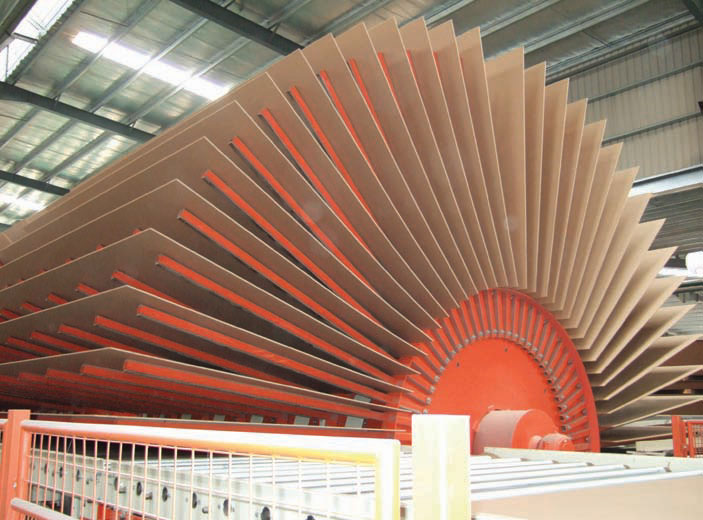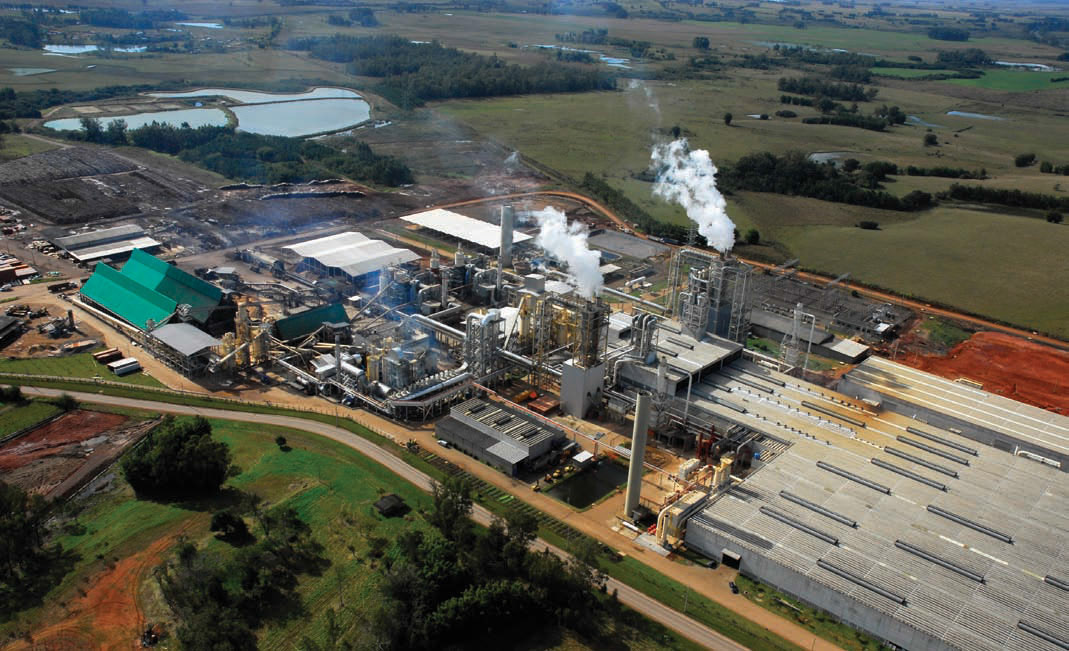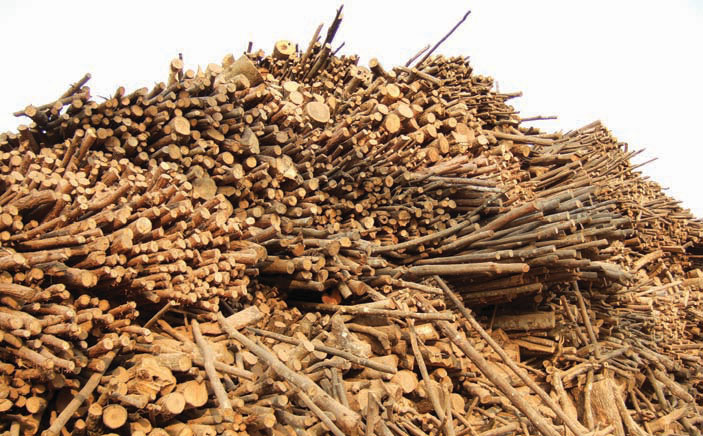Global capacity exceeds 100 million
17 August 2016In this second part of our annual survey of the industry worldwide, independent industry consultant Geoff Rhodes looks at new developments and summarises the current and future global position for MDF in countries outside Europe and North America
The capacity for MDF continues to increase, particularly in the South American and Asian regions. Following on from Focus on MDF Part 1, our survey of the industry in Europe and North America (WBPI June/July 2016), we now focus on the existing mills in the ‘rest of the world’ as at the end of 2015 and on those under construction in 2016 or planned for 2017 and beyond.
For the ‘rest of the world’ areas, after receiving updated and corrected data from across the globe, we now show an increase in installed capacity in 2015 of 66,632,000m3, while further investments identified for 2016 bring the total to 67,512,000m3.
For 2017 and beyond, this figure grows substantially again to 72,126,000m3 and when this is added to the European and North American figures (including Mexico) for the same period, we see global MDF capacity exceeding 100 million m3, at 105,014,000m3 – really quite remarkable when reflecting on MDF’s early evolution from a standing start at the end of the 1960’s!
From the tables it can be seen that the increases in 2016 and beyond are accounted for by Brazil, Iran and Vietnam; and for 2017 and beyond, by Brazil, Paraguay, India, South Africa and Thailand. We include a further two plants (ca 368,000m3 combined) for ‘West Asia’, which we understand have been contracted for, but which have not yet been publicly revealed by the investors.
China and North East Asia
Average annual growth over the past five years has been strong, with the exception of Japan.
Asia’s MDF market under-performed in 2015 due to a slowdown in global demand and prices have remained weak as a consequence, exacerbated by a cooling Chinese economy and continual depreciating domestic currencies against the US dollar.
However, China is still forecast to produce 85% of the furniture in North Asia by 2017 and the strong growth in the region will influence not only the aggregate consumption of all wood panels, but also the proportion of use by each sector.
Approximately 25-35% of annual furniture production in China is exported, with the largest volumes destined for the US, Japan and Europe, while the domestic market continues to grow year-on-year. As was reported last year, some furniture factories have had to close down due to raw material shortages, labour issues, higher wages and dwindling exports. The drive by the authorities to move industries to inner cities has also led to an exodus of some Taiwanese furniture factories from China to Vietnam.
Production capacity of MDF in China has grown rapidly over the past five years, increasing dramatically to 44,660,000m3 at end-2015. Production in China is projected to stabilise over the next three years, most likely peaking in 2015/16 and then declining marginally by 2017.
In China, forecasts are for consumption to increase at an average annual rate of just 1% to 2017, as the country shifts to a focus on more domestic growth, possibly at the expense of exports such as furniture. In the last 12 months, commercial activity in the Chinese MDF industry has continued to decrease as the government tries to rein in the country’s dramatic economic growth of recent years.
However, we can still report dynamic activity in China. Fifteen new multiopening lines (all supplied by SWPM), with a combined capacity of 750,000m3, were under construction and we understand came on stream by end-2015 as well as the two SWMP 4ft continuous lines (Shandong and Hubei) with a combined additional 363,000m3 and these have been added to our main capacity listing. We have also added the Xinjiang Xinxiwang Co Ltd MDF mill at Xianjian (2015 start-up) in the main listing now although final details of this mill are still awaited.
Also for 2015 in China, we have seen three new lines come on stream, supplied by Siempelkamp, for Changge Tianzheng in Henan (116,000m3); Gixiang Shishu City, Hubei (168,000m3); and Luyuan IV, Luoding, Guangdong (230,000m3), all now in the main listing.
With the difficulty in obtaining totally accurate information on all of the Chinese capacity, including all the small mills, we continue to make some informed assumptions.
For Korea, some very helpful input this year has come from the Korean Wood Panels Association who have reviewed and updated our data.
South East Asia
Together with North Asia, the South Asian economies are set to be among the world’s fastest-growing by 2017. India, Indonesia, Malaysia and Vietnam are expected to have an average real GDP growth rate of 5-6% per annum or even higher; Thailand is expected to grow at around 1%.
Economic development will strengthen household income, which will support residential construction. Urbanisation, supported by improved transport links will generate demand for dwellings.
In Vietnam, the MDF industry has fared relatively well due to more foreign direct investment and strong exports to the US. VRG Dongwha’s joint-venture mill in Binh Phuoc province is to be joined by a second production line from Siempelkamp with a capacity of 198,000m3.
Vietnam Rubber Group (VRG) which owns and manages a 250,000ha rubber tree plantation, has itself ordered an MDF plant from Siempelkamp under construction in Kien Giang, 200km south of Saigon with a ContiRoll press. The mill is due to start up in 2016 with capacity of 100,000m3.
Then there is the VRG Quang Tri 120,000m3 continuous ‘Dynasteampress’ supplied by Imal of Italy, due on-stream in 2016. Thang Nam (May) Forestry Joint Stock Company (JSC) started the first phase of its 175,000m3 mill in Ving Nghe An during 2014/15, so is added to the main listing. Its second phase is possibly expected during 2017/18, but currently we have no more news on this project.
Investment in production in Thailand continues and the Advance Fibre Co Ltd/ Metro-Ply investment is going ahead at Kanchanaburi, adding a further 310,000m3 MDF capacity with its Dieffenbacher line, due on-stream in 2017. The Wisewoods/ Green Panel MDF investment at Khao Yoi, Phetchaburi, with its 194,000m3 line from Siempelkamp, is due to start production in late-2016 or early 2017.
Malaysia’s capacity remains at 1,445,000m3. The Middle East has been a consistently-growing export market in recent years.
Evergreen Fibreboard Bhd (EFB) wants to strengthen its position as one of Asia’s largest MDF manufacturers and also to be among the top 10 producers in the world. India has new investments in MDF by Greenply Industries Ltd and the Indian plywood and laminate manufacturer, Century Plyboards Ltd. Greenply Industries ordered its 2nd Dieffenbacher MDF line in December 2015. The new line, with a capacity of 429,000m3 is being set up in Andhra Pradesh. The line will manufacture HDF/MDF. At 56m, this is the longest continuous press yet sold in Asia. Eucalyptus will generally be used, with production scheduled to begin in autumn 2017.
Century Plyboards Ltd intends to erect an MDF plant in Punjab during the next two years. We understand the company revived plans made several years ago, but postponed. The continuous press line has been ordered from Chinese company Yalian Machine Co Ltd, Jilin. The new plant will have a capacity of 200,000m3/year. Century Plywood claims to be the biggest producer of plywood and the third biggest producer of laminates in India.
Developments in South America
Argentina, Brazil and Chile, with a combined population of over 250 million, appear to have an underlying demand of well over one million housing units annually which in turn is good for MDF consumption. All three economies are now well-positioned for a stronger economic performance through to 2018.
Virtually no MDF was produced in Brazil in 1998; it now has the largest production capacity in South America. It is projected that MDF capacity in South America will exceed 11 million m3 by end-2017.
In Brazil, the two newest lines were the Arauco 500,000m3 line at Jaguariaíva, Parana state and Duratex’s 520,000m3 Itapetininga line; both are now fully operational. Fibraplac of Porto Alegre continues to expand its Glorinha plant and the one in Campinas São Paulo, so for 2015 its two MDF lines are now rated at 420,000m3 and 250,000m3 respectively.
For 2016 and beyond, by far the biggest planned panel project is still Duratex’s US$550m, 1.45 million m3/year twoline complex at Novo Monte Carmelo (Minas Gerais state) at the heart of its big forest base there. Duratex’s plans for a 700,000m3/yr unit to run in 2016 making MDP/MDF on a 77m press, and a 750,000m3/yr unit for MDF due in 2017, have now slipped back.
With an eye on Berneck’s decision to start an 840,000m3/yr MDP line further south in 2015, the São Paulo based group has now shelved the final product decision for the moment. At this stage, it looks likely to dedicate the first 700,000m3 line to MDF. Duratex has also left space there for a third line for either MDF or MDP.
Placas do Brasil, originally planning a 180,000m3/yr line at Pinheiros, (Espirito Santo state) has now revealed plans for a 300,000m3/yr plant, with start-up in 2017/18. The delay is put down to a relatively slow market and also to waiting for further build-up of the local eucalyptus plantations. Also Floraplac (in northern Pará state) with 430,000m3 at Paragominas was due to start up its second line by 2016 but it now appears more likely it will actually be in 2017.


